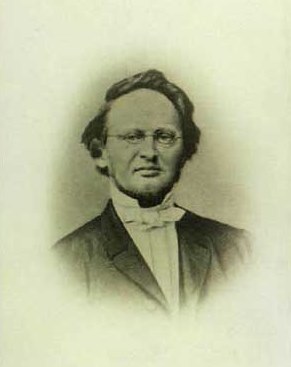Top Qs
Timeline
Chat
Perspective
Anders Sandøe Ørsted (botanist)
Danish botanist, mycologist, zoologist and marine biologist (1816–1872) From Wikipedia, the free encyclopedia
Remove ads
Anders Sandøe Ørsted, also written as Anders Sandoe Oersted or Anders Sandö Örsted (21 June 1816 – 3 September 1872) was a Danish botanist, mycologist, zoologist and marine biologist. He was the nephew of physicist Hans Christian Ørsted and of politician Anders Sandøe Ørsted.[1]
Remove ads
Career
In his early career, he published on Danish and Arctic nematodes[2][3] and on the zonation of marine algae in Øresund.[4]
Between 1845 and 1848, he travelled extensively in Central America and the Caribbean and published numerous papers on the flora, concentrating on the plant families Acanthaceae and Fagaceae.[5][6][7][8][9] One of his better known publications is L'Amérique Centrale.[10]
He was appointed professor of botany at the University of Copenhagen in 1851, a post he held until 1862. He was succeeded by Ferdinand Didrichsen.
His studies of what has since been known as juniper-pear rust showed that this fungus annually switches between two hosts; Juniperus sabina is the primary (telial) host and pear, Pyrus communis, is the secondary (aecial) host. He thus was the first to discover that some plant-parasitic fungi are heteroecious.[11] These studies were continued on other Gymnosporangium species.[12]
The orchid genus Oerstedella Reichenbach f. is named for him.
He is the author of several hundred plant names still in use.[13]
Remove ads
References
External links
Wikiwand - on
Seamless Wikipedia browsing. On steroids.
Remove ads

